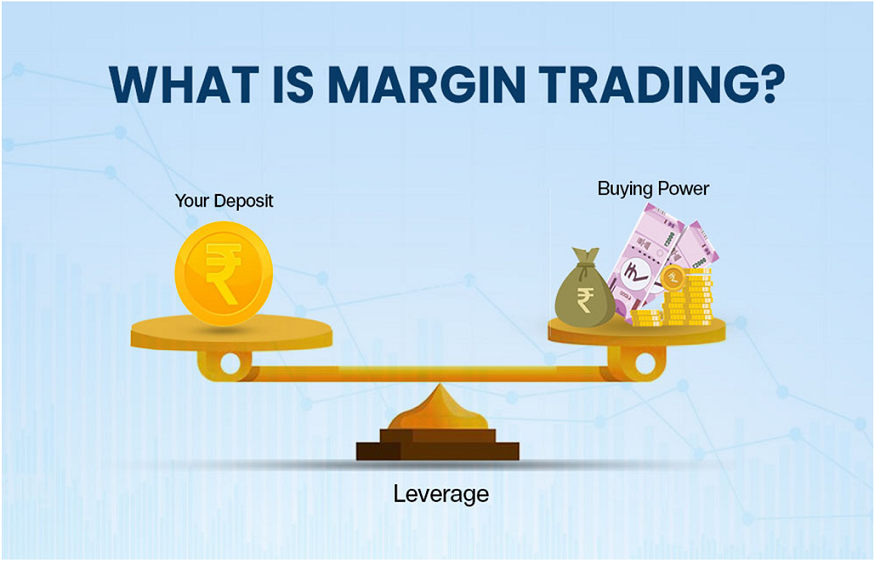The financial markets have evolved rapidly over the past decade, with technology becoming a driving force in how people invest and trade. Among the many innovations, trading apps have played a significant role in making stock market participation more accessible to everyday investors. One powerful yet often misunderstood feature available on these platforms is the Margin Trading Facility (MTF). For beginners looking to maximize their market opportunities, understanding how margin trading works on a trading app is essential.
What is Margin Trading Facility (MTF)?
In simpler terms, it enables you to purchase securities by paying only a fraction of the total value upfront, while the remaining amount is funded by the broker. This essentially acts like a short-term loan, helping traders amplify their buying capacity.
How Does Margin Trading Work on Trading Apps?
Trading apps have simplified the margin trading process for retail investors. Here’s a step-by-step breakdown:
- Account Setup – You need to enable the Margin Trading Facility with your broker. Some apps require additional documentation or agreement acceptance.
- Select Eligible Stocks – Not all stocks are available under MTF. The app will typically provide a list of approved securities.
- Place Your Order – When placing a buy order, you can choose the margin option and invest with partial funds.
- Interest Charges – Brokers charge interest on the borrowed amount, which can vary from 9% to 18% annually.
- Repayment or Settlement – Investors can hold these positions as long as they maintain required margins and pay interest on time.
Benefits of Margin Trading Facility
For beginners, margin trading might sound risky, but it also offers significant advantages if used wisely:
- Enhanced Buying Power – You can trade larger quantities or high-value stocks even with limited funds.
- Profit Amplification – By leveraging borrowed capital, you can potentially generate higher returns on investment.
- Portfolio Diversification – Instead of locking funds into a single stock, margin trading allows you to spread investments across multiple assets.
- Convenience on Trading Apps – Mobile platforms provide real-time monitoring, margin calculators, and instant fund utilization, making it user-friendly.
Risks Involved in Margin Trading
While margin trading offers exciting opportunities, it also carries certain risks that beginners must understand before diving in:
- High Leverage Risk – Just as profits can multiply, losses can also escalate quickly when trading with borrowed funds.
- Interest Burden – The interest charged on borrowed capital can reduce your overall returns if trades don’t perform well.
- Margin Calls – If the value of your securities falls below a certain limit, brokers may issue a margin call, requiring you to deposit additional funds or liquidate holdings.
- Market Volatility – Sudden price swings in stocks can lead to unexpected losses, especially when leveraged positions are involved.
Best Practices for Beginners in Margin Trading
To make the most of the Margin Trading Facility on apps, beginners should follow some prudent practices:
- Start Small – Begin with small positions to understand how margin impacts your trading psychology and portfolio.
- Use Margin for Short-Term Trades – Avoid long-term investments on margin since interest costs can accumulate over time.
- Keep Stop-Loss Orders – Always use stop-loss features available in trading apps to protect yourself from heavy losses.
- Monitor Your Portfolio Regularly – Keep track of your positions and available margin balance through your app’s dashboard.
- Educate Yourself – Most trading platforms provide tutorials, blogs, and margin calculators. Use these resources to make informed decisions.
Margin Trading Facility vs. Normal Delivery Trading
It’s essential to distinguish margin trading from regular delivery trading:
- Ownership – In delivery trades, you fully own the stocks you buy. In margin trading, ownership remains conditional until repayment.
- Cost – Delivery trades don’t involve borrowing costs, while margin trading includes interest charges.
- Risk Profile – Delivery trades are relatively safer for beginners, whereas margin trading involves higher risk and requires cautious planning.
Conclusion
The MTF on trading apps can be a powerful tool for beginners who want to expand their trading capacity and potentially increase profits. However, it is equally important to approach it with caution, discipline, and a strong understanding of market dynamics. As with any financial instrument, margin trading comes with both opportunities and risks.
By starting small, using app-based tools wisely, and focusing on disciplined risk management, beginners can gradually learn how to leverage the margin facility without exposing themselves to unnecessary financial stress. Remember, successful trading is not just about making profits but also about preserving capital and building long-term market confidence.





